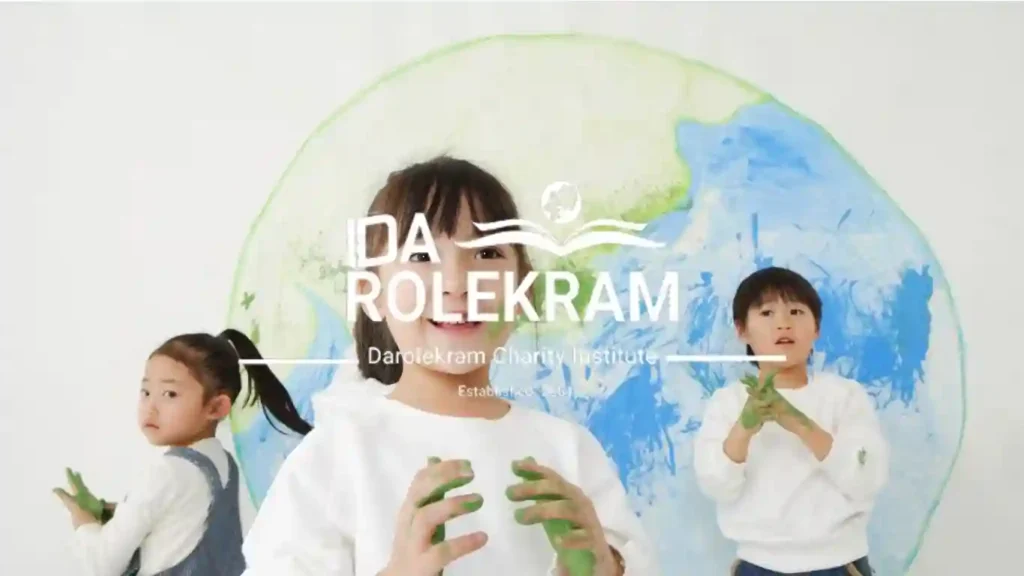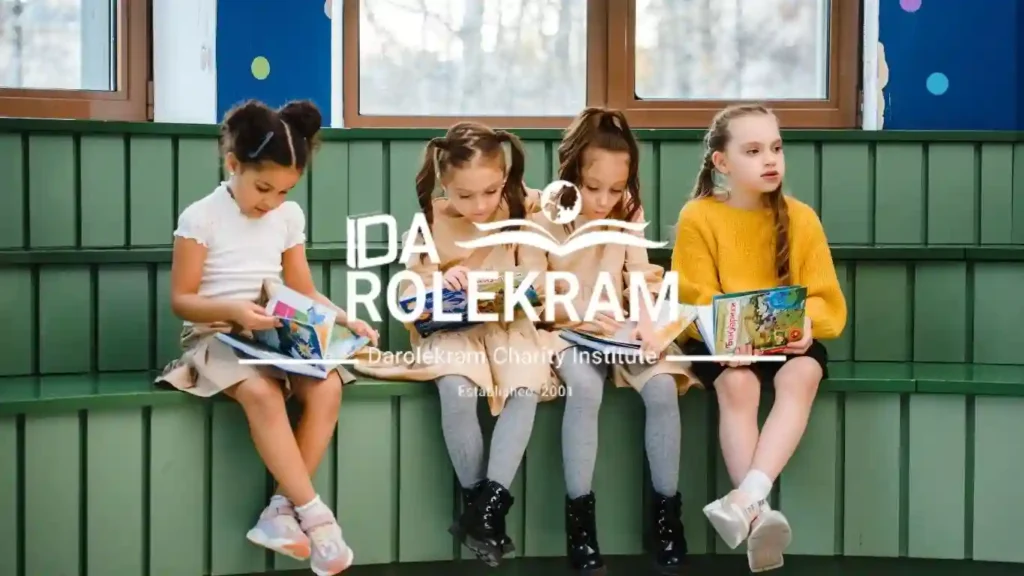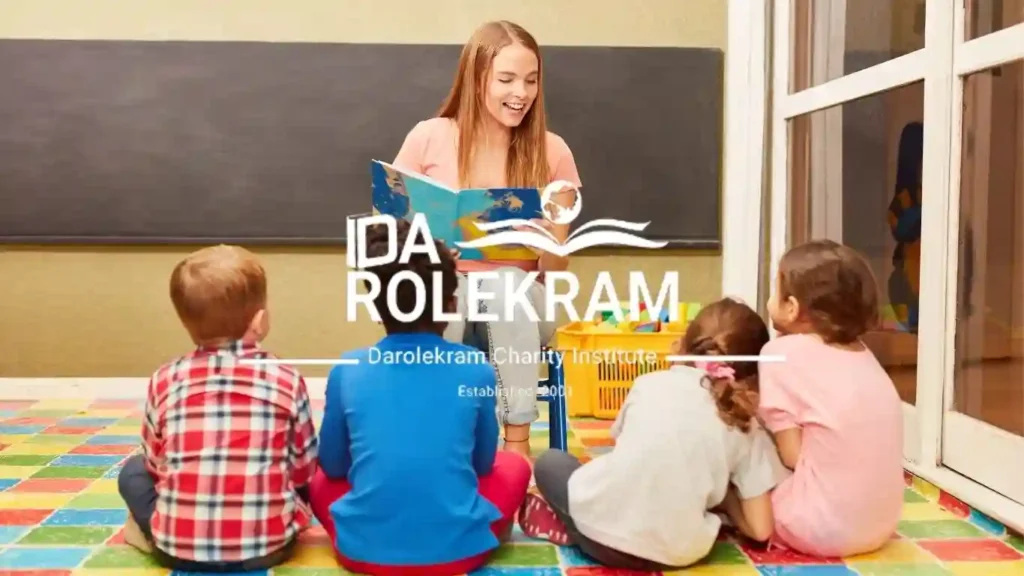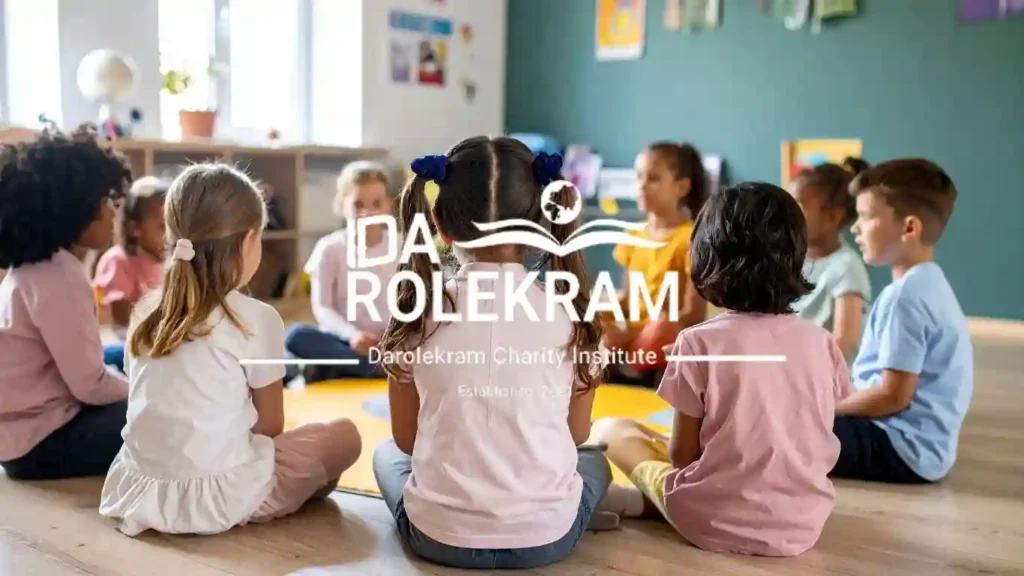This article presents an overview of educational volunteering opportunities in Iran, both remotely or in person. We will describe the organizational structure of educational volunteering in Iran, discuss the types of volunteer opportunities, discuss the role of charitable institutions in educational development, and provide some options for how people can engage in educational volunteering. The social dimensions of educational volunteering will be explored, with an emphasis on how this can be more significantly embraced within Iranian society, and the potential for creative means of leveraging technology to bridge gaps in educational accessibility .
Why Education Projects Matter in Iran
Education is the foundation of opportunity. In Iran, while many urban centers offer robust schooling, thousands of children in rural and underserved areas still face barriers to learning. These include poverty, lack of infrastructure, and limited access to qualified teachers.
Volunteering for education projects in Iran is more than just lending a hand—it’s about empowering futures. Whether you’re teaching English, mentoring students, or helping build learning spaces, your time and skills can transform lives. And in return, you gain cultural insight, personal growth, and the deep satisfaction of making a real difference.
Understanding the Educational Needs in Iran
Iran’s education system has made significant strides, but disparities remain. Children from low-income families, especially in provinces like Sistan and Baluchestan or Khuzestan, often lack access to basic educational resources. Girls in some regions face additional cultural and economic barriers.
Nonprofit organizations like Darolekram work to close these gaps by offering scholarships, mentorship, and community-based learning programs. Volunteers are essential to these efforts—they bring energy, expertise, and hope.
Types of Education Projects You Can Volunteer For
There’s a wide range of educational initiatives in Iran that welcome volunteers. Depending on your skills and interests, you might contribute to:
Tutoring and Teaching: Help students with English, math, science, or computer literacy.
Mentorship Programs: Guide teenagers through academic and personal development.
School Renovation Projects: Assist with painting, repairs, or creating safe learning environments.
Online Education Support: Provide virtual tutoring or content creation for remote learners.
Special Needs Education: Support inclusive learning for children with disabilities.
Each project offers unique challenges and rewards, and many are flexible enough to accommodate short-term or remote volunteers.
How to Apply: Step-by-Step Guide to Volunteering in iran
Volunteering in Iran is straightforward if you follow the right steps:
1. Choose a Reputable Organization:
Start with trusted nonprofits like Darolekram.
2. Submit an Application:
Most NGOs have online forms or email-based applications.
3. Provide Documentation:
You may need to submit a resume, ID, and background check.
4. Attend Orientation:
Some organizations offer training sessions or onboarding calls.
5. Start Volunteering:
Once approved, you’ll be matched with a project that suits your skills.
Stories from Past Volunteers in iran (darolekram)
“Volunteering with Darolekram changed my life. I taught English to girls in a small village, and their enthusiasm was contagious. I came to give—but I received so much more.”_
— Sarah, UK
“I helped renovate a school in Yazd. The community welcomed us like family. It was humbling and unforgettable.”_
— Amir, Germany
Why Choose Darolekram for Volunteering?
Darolekram is one of Iran’s leading educational charities, with a focus on empowering underprivileged students through holistic support. Here’s why it stands out:
– Transparent and Ethical: Fully registered and accountable.
– Community-Based: Projects are designed with local input.
– Volunteer-Friendly: Offers training, support, and flexible roles.
– Proven Impact: Thousands of students supported since inception.
By volunteering with Darolekram, you join a mission that’s bigger than any one person—it’s about building futures.
Impact of Volunteering on Iranian Students
Your time and effort can lead to:
– Improved academic performance
– Increased self-confidence
– Greater access to higher education
– Stronger community engagement
– Long-term social mobility
Education is a ripple effect. One volunteer can change one life—and that life can change many more.
Volunteering for education projects in Iran is a powerful way to contribute to social change. Whether you’re a teacher, student, traveler, or simply someone who cares—your skills and compassion are needed. Organizations like Darolekram make it easy to get involved, and the rewards are immeasurable.
So if you’ve ever wondered how to make a difference, this is your chance. One child. One classroom. One volunteer—you.
1. The Educational Volunteering Ecosystem in Iran
Iran’s educational volunteering scene embodies a complicated and evolving ecosystem that has grown in response to ongoing educational inequities across the country. Iran’s historical commitment to education and literacy, with immense political and cultural weight, has paved the way for grassroots volunteer-led initiatives committed to expanding access to quality education for all. The ecosystem consists of informal grassroots organizations, community-based groups, and large formal charitable organizations, all moving toward educational equity for Iranian children and youth.
The contemporary educational volunteering landscape in Iran exists in a different socio-economic space where traditional philanthropic values come into contact with new technological advances. These new configurations have spawned new and innovative ways that volunteering could take form that transcend geographical and socio-economic barriers . Darolekram, along with others, has taken a comprehensive approach that seeks not only to provide educational instruction but also approaches holistic child development and aims to formalize, build, and expand these programs into a coherent and systematic approach to address important social issues.
Evolution of Volunteer-Driven Educational Initiatives
The shift in educational volunteering in Iran is indicative of global trends related to community-led development and participative approaches to resolving challenges. Historically, educational charity has taken the form of traditional practices, but now charities have developed into complex systems that concentrate on ensuring sustainability, accountability, and evaluation. Further, this development in volunteering is substantial considering the current digital era we live in. Digital volunteering has truly opened up possibilities for collaboration across the world that include knowledge sharing.
Research indicates that educational volunteers in Iran have created innovative solutions using voluntary educational practices across the country. Volunteer-driven educational initiatives in Iran have demonstrated remarkable adaptability during challenging periods , such as the COVID-19 pandemic, when organizations transitioned quickly to online platforms and continued delivering education to vulnerable populations and societies that previously could not access education opportunities. The importance of volunteer networks to the future of building strong educational systems in Iran cannot be understated.
Technological Integration in Educational Volunteering
Technology has changed the way one volunteers for education and the efficacy thereof in Iran. Digital platforms provide real-time collaboration between the volunteer and students from miles apart, establishing virtual classrooms that transcend traditional barriers . Such a technological transformation is mostly beneficial for rural communities and underserved areas where qualified teachers remain scarce.
Mobile learning applications, video conference tools, and online resource libraries are now standard tools in many contemporary volunteer programs. These technologies serve not only to allow for direct education delivery but also for volunteer training, monitoring, and evaluating processes that allow programs to guarantee quality and effectiveness.
2. Remote Volunteering Opportunities in Iranian Education
Remote volunteering has emerged as a powerful catalyst for educational access and development in Iran, allowing both the volunteer and the beneficiaries unprecedented flexibility. Remote volunteering has been particularly useful in meeting the educational needs of isolated areas and students with limited mobility. Remote volunteering encompasses various formats, from one-on-one tutoring sessions to large-scale online workshops and educational content development
The effectiveness of remote educational volunteering lies in its ability to leverage diverse skill sets and expertise that were not necessarily going to be leveraged to serve the people in need or populations without access to education. International volunteers can provide formalized knowledge in a variety of subjects such as English language teaching or academic STEM, while domestic volunteers can provide culturally-based support and mentorship. Organizations such as Relief International, have run remote educational programs that alone have served tens of thousands of students across numerous provinces in Iran.
Virtual Tutoring and Mentorship Programs
Virtual tutoring represents one of the most direct and impactful forms of remote educational volunteering. Virtual tutoring programs operate by having scheduled one-on-one or small group tutor sessions where volunteers provide academic support, homework help, and skill development. Because of their individual nature, virtual tutoring programs also cultivate relationships between volunteers and students, which typically leads to improvement in not only academics, but also student motivation and self-esteem.
Virtual tutoring programs should have clear modules for training volunteers and ensure that volunteers not only understand the technical aspects of online education, but also the culture of the students with whom they are working, especially in the case of Iranian students. Many of the virtual tutoring programs would also have some level of continued support and supervision of volunteers to ensure quality of the programs and to provide continued support to volunteers when issues arise.
Online English Language Instruction
English language teaching is arguably the area of remote volunteering that has the highest demand in Iran. Because of the global importance of English, there are many Iranian students looking to improve their language skills for education, professional advancement, or personal development. In this area, volunteer instructors can assist students in a number of ways – in conversation practice sessions, language workshops focused on grammar and usage, and learning strategies for preparing for international language assessments.
Organizations like ENGin and Children of Persia have developed robust systems to match volunteers, who are fluent and/or experienced English speakers, with Iranian students based on the students’ English proficiency levels, goals for the language, and schedules. Many of these programs also include aspects of cultural exchange for students and volunteers that heighten intercultural understanding and global connectivity.
Digital Content Creation and Curriculum Development
The pace of the demand for quality education content in Persian and other local languages has created opportunities for volunteers with skills in content creation and instructional design. This type of volunteering involves developing video lessons, interactive learning modules, educational games, and assessments that can be used by multiple educational organizations as well as used by students directly.
Content creation volunteering requires skills in graphic design, video production, and pedagogy, which is why it is perfect for volunteers with a professional background in education, media or technology. Because digital content is scalable, the volunteer effort in this type of work can have a tremendous and lasting effect.
3. In-Person Volunteering Opportunities
While remote opportunities have increased, in-person volunteering is a fundamental educational development opportunity in Iran. Physical presence enables volunteers to provide hands-on support, better establishing relationships in the community and tackling more complex educational issues which are often further exacerbated without direct intervention. In person volunteering opportunities run the gamut from volunteer teachers in classrooms, after-school programs, to sites creating educational infrastructure or community outreach programs.
In-person volunteering has value not just in educational delivery, but in community building and social cohesion. Volunteers who volunteer in communities often also serve to connect communities of different socio-economic circumstances, but more broadly they build understanding and cooperation between often competing groups in the educational ecosystem, which directly strengthens the educational ecosystem. A comprehensive approach, like Darolekram’s shows how in-person volunteer opportunities can be integrated into a broader community development approach that has multiple dimensions tackling educational inequality.
Classroom Support and Teaching Assistance
Direct classroom support is one of the oldest forms of educational volunteering, yet it remains one of the most influential. Volunteers work with the regular teacher to provide more instruction, interventions for struggling students, and support the overall functioning of the classroom. Volunteers are often critical in classrooms that are overcrowded, allowing a volunteer to support individual attention to a few children that the teacher cannot.
Successful classroom volunteers often provide specialized skills or knowledge that complement the regular curriculum . For example, a volunteer with an education background may be an engineer by trade and provide lessons related to science or technology that include enrichment activities that enhance their students’ educational experiences and also promote activities that may consider future career aspirations.
After-School and Enrichment Programs
After-school programs are valuable forms of supplemental educational opportunities and safe spaces often provided to students from marginalized communities, particularly in urban areas. Because volunteers in after-school programs are not bound by the constraints of a classroom structure, they have the freedom to incorporate more innovative educational strategies, which may be limited in a formal educational setting. After-school programming can involve homework support, skill-building, educational arts, sports, or even specific academic material.
Because of the informal aspect of after-school programming, volunteers are able to forge greater personal relationships with students as well as respond to individual needs in more meaningful ways. Many distinct successful programming efforts incorporate mentoring and life skills into a programming effort, as educational attainment occurs within a larger context as values and processes also contribute to a student’s educational success.
Community Education and Family Engagement
Community-based educational volunteering acknowledges that student success is closely linked to family and community support systems . Volunteers working in this context tend to focus on programs for adult literacy, parental involvement, and/or community workshops to build an educational community’s capacity for awareness and educational advocacy.
These programs matter, particularly in communities where their traditions for education may be limited or families do not have the knowledge of how to support their children’s academic development. Strengthening the educational ecosystem as a whole, community-based educational volunteering is a context that built sustainable bases for ongoing improvement in education and the educational development of children and youth.
4. The Role of Charitable Organizations in Educational Development
Charitable organizations are at the forefront of educational volunteering in Iran. They provide the capacity, the features, and coordination required to turn what is typically an individual volunteer effort into systemic educational impact. Charitable organizations are many and include large institutions registered on a national level to smaller community-based organizations with localized scope and focus. The effectiveness of educational volunteering is dependent largely on organizational support of quality and strategic vision for how to use volunteers.
Darolekram serves as an exemplary model , which highlights the strengths of charitable organizations as vehicle for a comprehensive educational support structure. Darolekram has more than twenty years of work experience, has served more than eleven thousand students , and illustrates how educational charity is transformed when it is systematic, scalable and addresses educational dignity and development of the student as the main issue. The multi-service features the organization has developed acknowledge not only immediate educational needs, but also health, psychological and economic mechanisms for engagement in education.
Organizational Infrastructure and Support Systems
Successful educational charities invest considerable resources in creating strong and managed infrastructure that appropriately supports volunteer engagement. This includes infrastructure for volunteer recruitment and training programs, evaluation and assessment of programs, technology platforms, and staffing in the form of administrative support that ensures volunteers can deliver direct service and not spend time on logistics and organization.
The best organizations even include in their programming, continuing professional development for volunteers since developing volunteers’ skills ultimately benefits students and other beneficiaries. This may include workshops on educational philosophy and delivery, cultural awareness, technology skill development, and subject matter expertise.
Quality Assurance and Impact Measurement
Well-regarded educational charities have very extensive quality assurance systems in place to ensure volunteer programs measure up to standards of effectiveness and safety. They can include background screening of volunteers, ongoing supervision and evaluation, standardized training curriculums, and ongoing data collection related to program efficacy.
The sophistication of impact measurement has changed dramatically, with many organizations now using some of the most rigorous evaluation designs to measure aggregate short-term outputs and long-term outcomes. This data-driven process supports ongoing program and design improvement and enhances agency and accountability with donors, volunteers, and beneficiaries.
5. Darolekram: A Model of Educational Excellence
Darolekram represents a pioneering approach to educational charity that exemplifies how comprehensive, dignity-centered programming can transform educational opportunities for vulnerable children. Founded on the principles of wisdom, kindness, and dignity, Darolekram has recognized that effective educational support must address the whole child rather than focusing solely on academic achievement.
Darolekram’s track record in supporting over eight thousand current scholarship recipients across more than twenty programs attest to the possibilities of expanding educational charity when operated with this degree of consideration. A holistic commitment to supporting youth education, rather than educational charity itself, also includes initiatives to support educational scholarships, health and medical support, psychological support services, entrepreneurship education, and family support services. Darolekram recognizes that issues like student-learning success are based on more than educational success alone; students learning success relies on understanding and addressing the many overlapping factors that develop a child and dictate their learning ability.
For individuals interested in becoming involved in educational development work in Iran, Darolekram offers many levels of service, including direct volunteer service, financial support, and advocacy activity. As a transparent, accountable not for profit organization, Darolekram is confident that volunteer service is used in a responsible and ethical manner toward their educational services.
6. Pathways to Volunteer Engagement
In order to volunteer in education successfully, it is important to prepare, be realistic, and commit to both cultural sensitivity and professional development. Prospective volunteers need to start by researching the types of opportunities available, evaluate their own skills and availability, and identify organisations whose procedures and missions align with their interests and prospects.
Preparing to volunteer should include cultural orientation, language study where relevant, and the development of any technical skills pertinent to the selected volunteer role. Many successful volunteers also spent time learning about the wider educational landscape in Iran, both in terms of the current issues, policies and programmes that are impacting education – which will have some bearing on their volunteer experience.
Skills Assessment and Matching
A thorough understanding of volunteer capabilities and program needs is vital for the successful placement of volunteers. In general, a formal interview and skills assessment is conducted by organizations to assist the selection of the best volunteers for volunteer placement. The purpose of this process is beneficial for both the volunteer and the recipients. The process maximizes the chances for a successful outcome and experience for all involved.
Volunteers should honestly assess their own strengths, limitations, and learning objectives when deciding amongst the range of opportunities available to them. Enthusiasm and commitment are great, but a realistic self-assessment will allow volunteers to make a real difference and avoid some of the frustration or disappointment that can occur in undesirable placements.
Cultural Preparation and Sensitivity Training
Cultural competence is a key piece of effective educational volunteering, and is especially important for international volunteers, or volunteers working in environments across socioeconomic lines. Cultural preparedness must engage with aspects of culture beyond the manifest cultural customs and practices. Volunteers should also explore cultural values and norms, communication styles, and landmark concepts of education, all of which impact learning contexts and relationships between learners and teachers.
Many organizations provide formal cultural orientation programs, but volunteers should also pursue the other possibilities afforded by cultural mentoring, language study, and other firsthand experience. All of these resources can help a volunteer be more effective, create sensitivity, and appreciate meaning and purpose.
Conclusion
The landscape of educational volunteering in Iran offers rich opportunities for meaningful contribution to one of society’s most fundamental needs. Volunteer roles can take various forms, from remote engagement that leverages technology to transcend geographical barriers to direct, in-person service that builds deep community connections where volunteers can gain valuable local context and cultural understanding. Volunteers can play crucial roles in advancing educational equity and opportunity.
The successful initiatives of organizations like Darolekram show that, where funding and resources are appropriately organized to support the ideas of educational volunteering, volunteers can get involved in education at an immense scale and impact, without sacrificing their focus on the individual’s dignity and holistic development. In the coming decades, Iran will continue to build up education systems and address gross disparities in educational opportunity, and while some of that system development may involve formal educational systems, volunteers will remain important contributors in bridging the gap.
Frequently Asked Questions
1. Is it necessary to know Persian to volunteer in education projects in Iran?
Not necessarily. Many remote opportunities, such as English language teaching, require only English speakers. In person, it can be useful to have at least basic Persian skills, though this is often not a requirement; especially if you are volunteering with organizations that will provide volunteer coverage. Some organizations also include language training as part of the volunteer preparation.
2. How long do I have to commit to volunteering in education projects in Iran?
Most organizations expect a minimum commitment of three to six months to have an educational impact on students, however, there are many short-term projects that allow some volunteer shifts of one month. For remote volunteering, there tends to be greater flexibility, but weekly hour commitments are likely between five and twenty hours. Volunteers who commit longer follow-through will have better results and relationships with students.
3. Is there an age restriction for volunteering with Iranian education organizations?
Most organizations look for volunteers aged 18 and older, but some organizations accept under-aged volunteers if they have parental consent and supervision from a parent. There is seldom an upper age limit for volunteers, and many organizations made positive comments about the lived experience and wisdom of older volunteers. Organizations usually ask for references and background checks no matter what age the person is.
4. What equipment or technology do I need to remote educational volunteering?
You need a reliable internet connection, and a computer or tablet with a camera and a microphone, and basic software, like video conferencing capability. Some organizations may provide access to specialized educational platforms and materials (e.g. University of Toronto with the WISE project). Technical support will be offered to volunteers who require help with digital technologies.
5. Is can you take tax deductions for expenses related to volunteering internationally in Iran?
Tax deductibility would depend on the laws of your country and whether the volunteer organization has the proper status. Some organizations that are established like Darolekram already have links with recognized charities that may qualify for tax deductions. It is advisable to speak with a tax professional with experience with international educational volunteer work. Be sure to keep a record of all expenses related to volunteering.





